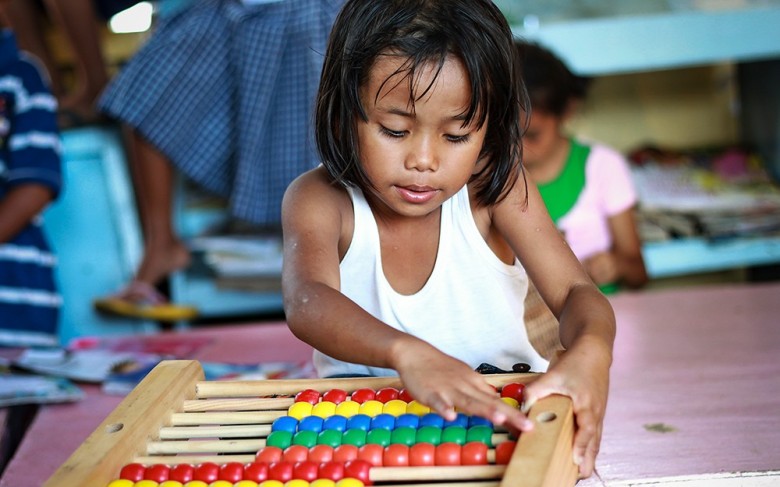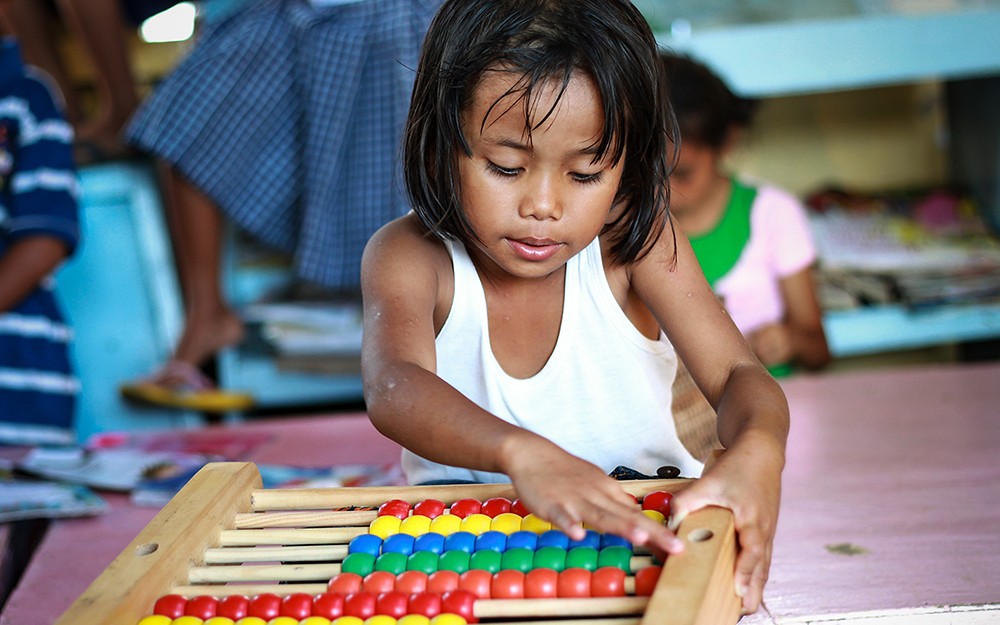
©2013 ORLANDO DUCAY JR./WORLD VISION
A girl plays with a colorful wooden toy at World Vision’s Child-Friendly Space in Tabogon, northern Cebu, Philippines.
When I am too busy and don’t play long enough with Toddler, he tugs on my clothes and demands “up, up” and if he cannot get what he needs, he will bury his face in the backs of my legs and whine in his shrillest pitch until I get down on the floor with him and help him find the puzzle piece with the bunny on it that he’s always looking for. Toddler needs play to feel loved and secure; to not play with him then, from his perspective, is to deny him love and security.
Children are the most vulnerable members of a community.
In her paper Risky Play and Children’s Safety: Balancing Priorities for Optimal Child Development, Dr. Mariana Brussoni writes that “children’s free play has been recognized as a major agent in young children’s development and learning. Through play, children learn societal roles, norms, and values and develop physical and cognitive competencies, creativity, self-worth and efficacy.”
Play is not just fun and games. Dr. Brussoni and her team found that “free play is fundamental to healthy child development, and that restriction of free play in the preschool years might potentially have lifelong repercussions.”
A child who cannot play is a child who’s development is stunted.
Whether they are trapped in a multi-generational cycle of poverty and are forced to forgo their education for paid labour, or they belong to communities devastated by war, disaster, famine or economic upheaval, children in poverty often do not have many opportunities for free play in safe, secure spaces. In emergency situations, children are the most vulnerable members of a community, and risk injury, exploitation and abuse. It is in these situations that many children are forced into dirty, dangerous and degrading jobs, either through coercion or necessity.
Children experience the world first through play, trying on roles and learning social cues through their interactions with their peers. Children need to play.
A child who cannot play is a child whose development is stunted.
If a generation of a community’s children is deprived the right to play and experience the essential learning that comes from free and spontaneous exploration, what will become of it in the long term? The damage caused by an earthquake in an impoverished community is not limited to the damage we see on the news.
I watch Toddler piecing his puzzles together and crashing his trains into the cat, and through it I see him grow. His motor skills are improving, and his imagination is expanding. He shouts “oh no!” as he derails his little wooden coal tenders or sends his stuffed lion flying through the air. He invites me to play “night night” and then fake-snores with his head on his blue plush puppy.
It is through play that Toddler has really begun to engage with me and Spouse. And through play, we’re learning a lot more about him. The benefit to our family is obvious to us in the way our relationships have grown over the past few months. Can you imagine how the whole world would benefit if children everywhere had access to natural environments and child-friendly spaces in which to play and learn and grow?
***
Citation:
Brussoni M, Olsen LL, Pike I, Sleet DA. Risky Play and Children’s Safety: Balancing Priorities for Optimal Child Development. International Journal of Environmental Research and Public Health. 2012; 9(9):3134-3148.

Leave a Reply